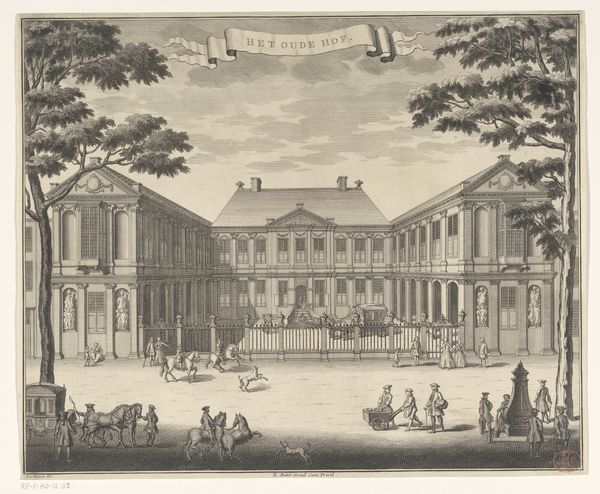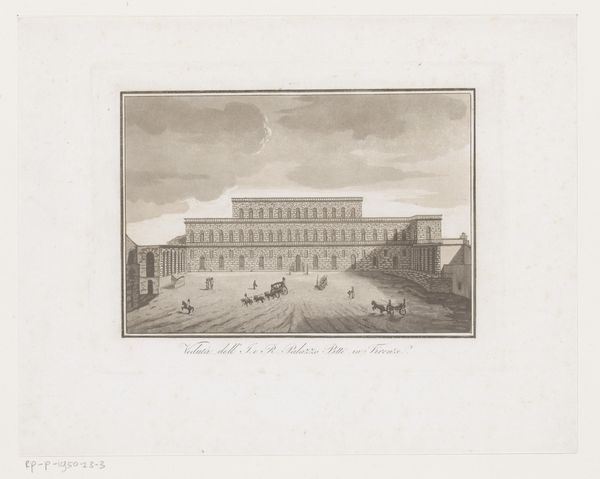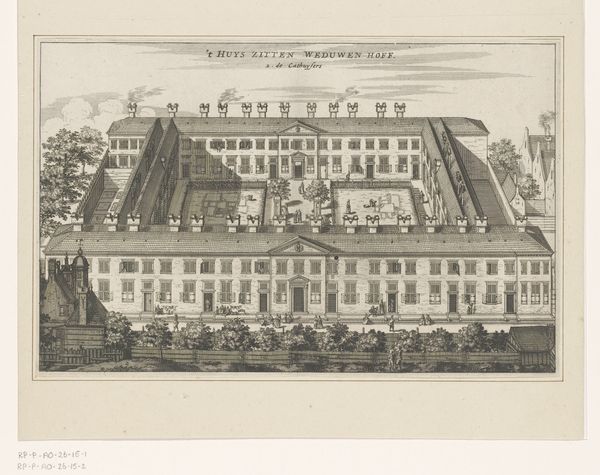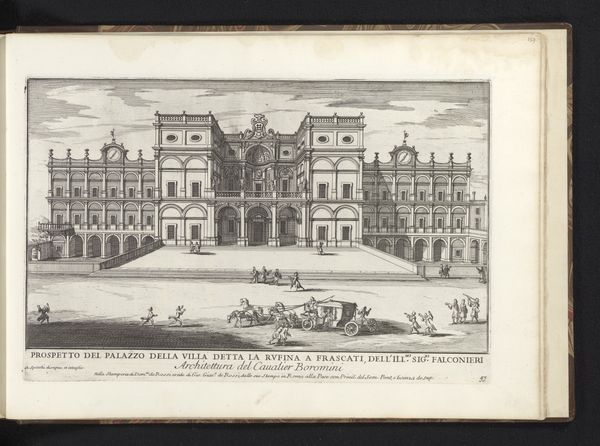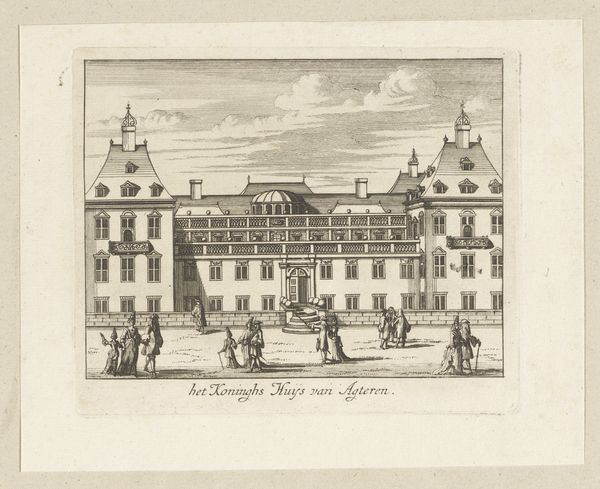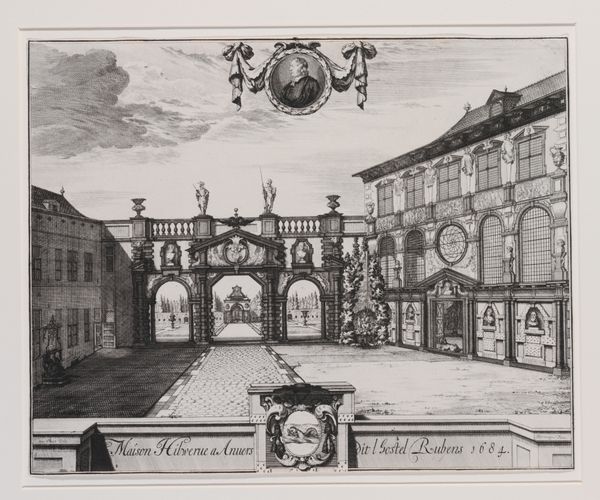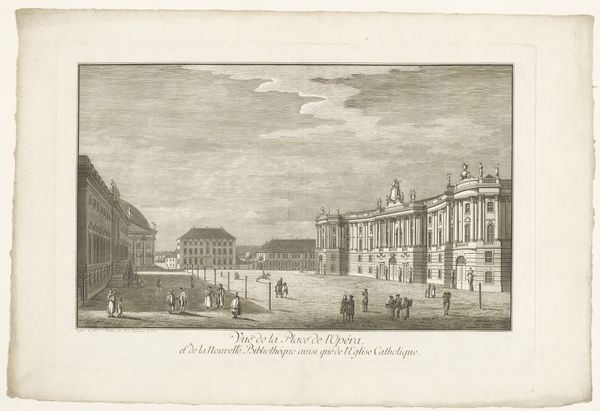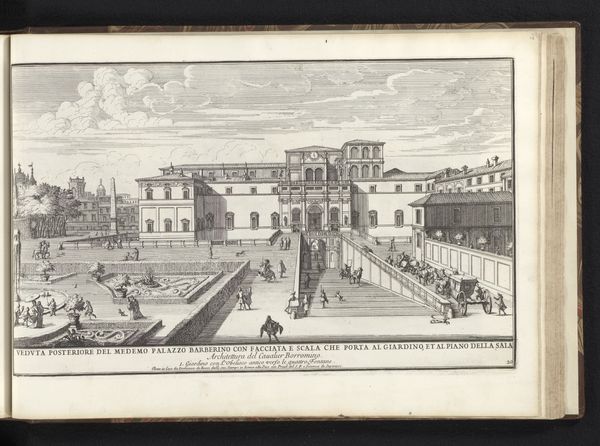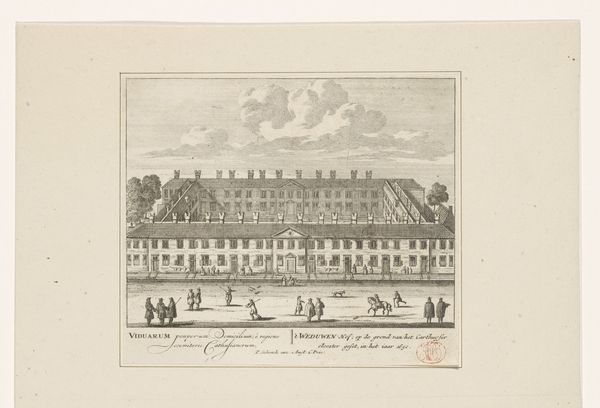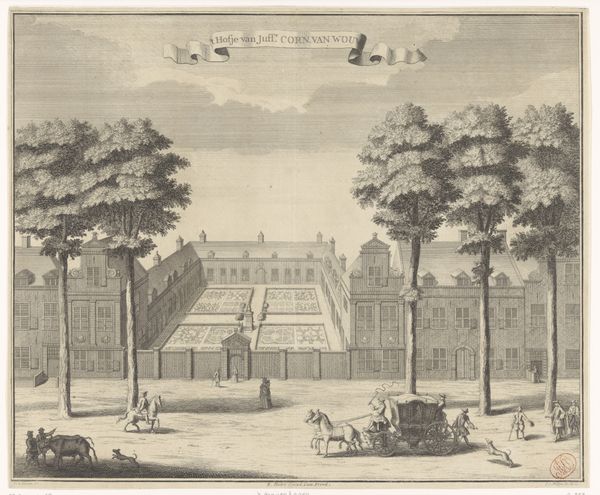
View of an interior corridor of the monastery of El Escorial, from a series of Views of El Escorial 1785 - 1795
0:00
0:00
drawing, print, engraving, architecture
#
drawing
#
neoclacissism
# print
#
landscape
#
cityscape
#
engraving
#
architecture
Dimensions: Sheet: 15 3/16 × 21 1/16 in. (38.5 × 53.5 cm) Image: 11 1/2 × 17 1/2 in. (29.2 × 44.5 cm)
Copyright: Public Domain
This print, showing the monastery of El Escorial, was made by Tomás López Enguidanos in the late 18th or early 19th century, using etching and engraving. The dense textures of the image are entirely dependent on the artist's skilled manipulation of metal, acid, and ink. Notice how thousands of tiny etched lines create areas of tone, and carefully describe the building's architectural details. Look closely, and you can see how the marks vary depending on the angle of light they are intended to suggest. The image has a documentary quality, characteristic of the Enlightenment period. Yet the intensive labor involved in the print's production, including the drawing, the etching of the metal plate, and the printing itself, reflects a pre-industrial mode of making. The texture, form, and cultural meaning of this print are deeply embedded in the history of craft and manual skill. By appreciating the importance of materials, making, and context, we gain a deeper understanding of this artwork, challenging traditional distinctions between fine art and craft.
Comments
No comments
Be the first to comment and join the conversation on the ultimate creative platform.

